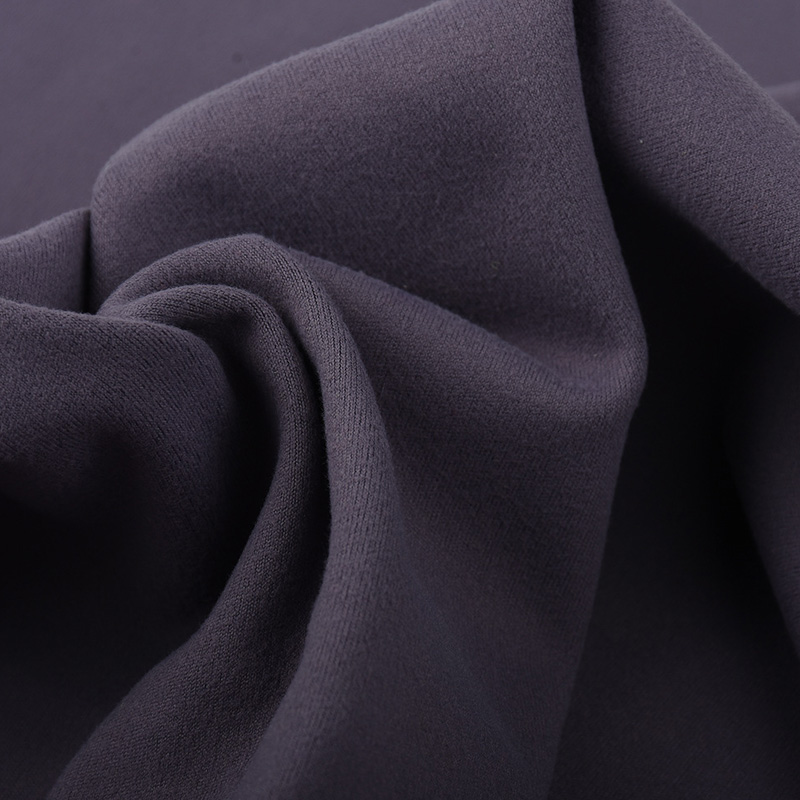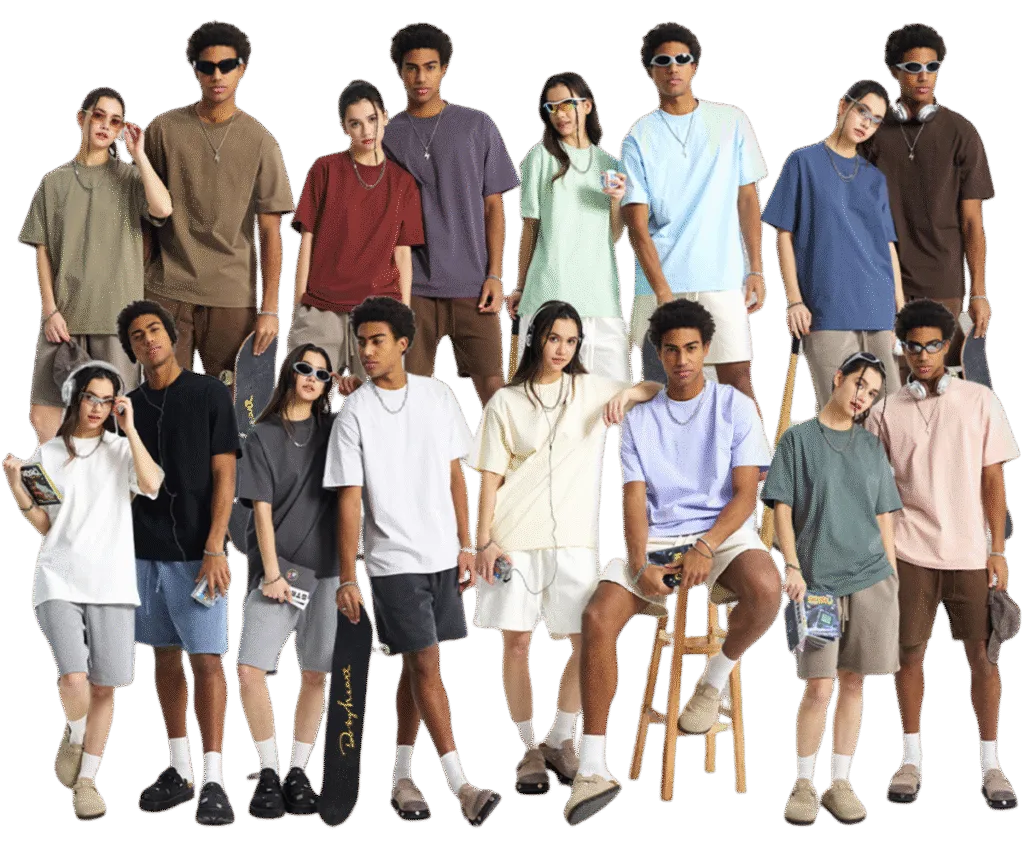Ein vollständiger Leitfaden für die Anpassung von Funktionsgeweben - von der Faserauswahl bis zur Leistungsprüfung

In today’s fashion world—especially in activewear, yoga outfits, and outdoor performance gear—the right fabric can make all the difference. It’s not just about how it looks anymore. Breathability, moisture control, stretch, UV protection, and long-lasting durability have become must-haves for every serious brand.
At Shengchao Textile, we’ve spent years perfecting the art of developing and customizing high-performance fabrics. From choosing the right fibers and weaving structures to testing every detail for performance, we know what it takes to turn an idea into a fabric that truly performs.
1. Key Performance Dimensions of Functional Fabrics
1.1 Breathability & Moisture Wicking
When it comes to comfort, breathability is everything. A good fabric should let air flow and help sweat evaporate quickly—keeping the wearer cool and dry.
This mainly depends on the fiber structure, porosity, and layering design of the fabric.
In testing, we usually look at things like air permeability, moisture vapor transmission rate, and drying time under controlled conditions.
Pro tip: If you want better moisture control, go for hydrophilic fibers such as modified polyester or modal. Another way is to add a hydrophilic finishing during post-processing to improve sweat absorption and evaporation.
1.2 Elasticity & Recovery
Stretch and recovery determine how well a fabric moves with the body and how quickly it returns to its original shape.
You’ll often hear about four-way stretch versus two-way stretch—basically, whether the fabric stretches in all directions or just one.
We test elasticity through elastic recovery, residual deformation, and tensile strength.
The key to consistent stretch is yarn selection, weaving tension, and fabric structure. Even small changes in knitting or weaving can affect how the fabric behaves when stretched.
1.3 UV Protection & Antibacterial Performance
Sun protection and hygiene are becoming more important than ever—especially for outdoor and sportswear fabrics.
To improve performance, we can add UV absorbers, use UV-blocking fibers, or apply antibacterial finishes that include silver or copper ions.
Testing follows global standards like AATCC 183 for UV protection and AATCC 100 or ISO methods for antibacterial effectiveness.
1.4 Durability & Color Fastness
Great performance means nothing if it doesn’t last. After repeated washing and wear, some fabrics lose elasticity, fade in color, or see reduced antibacterial effects.
That’s why we test for color fastness to washing, rubbing, perspiration, and light exposure.
To keep performance consistent, manufacturers often use cross-linking agents, color fixatives, and antioxidants that help fabrics stay bright and strong even after many laundry cycles.
1.5 Sustainability & Eco-friendliness
Sustainability isn’t just a trend—it’s the future of textiles.
More and more brands now choose recycled polyester or nylon fibers, low-impact dyeing, and zero-discharge finishing processes to reduce environmental impact.
Certifications like OEKO-TEX®, GOTS, and bluesign®. are becoming must-haves for global buyers who want assurance that their fabrics are safe, responsible, and eco-friendly.
2. The Fabric Customization Process at Shengchao Textile
| Step | Beschreibung | Key Control Points | Risk / Caution |
|---|---|---|---|
| 1. Requirement Analysis | Define target performance, hand-feel, color, and budget | Gather all specs before sampling | Miscommunication may cause direction deviation |
| 2. Material Selection | Choose yarn, fiber blend, and structure | Match mechanical & chemical properties | Backup options for unstable raw material |
| 3. Sample Development | Small-batch trial production | Maintain dyeing consistency & accuracy | Sampling may require several iterations |
| 4. Performance Testing | Internal or third-party testing | Air permeability, stretch, color fastness, etc. | Plan sufficient testing lead time |
| 5. Customer Feedback & Adjustment | Client fitting & performance feedback | Adjust shade, hand-feel, shrinkage | Excessive revision may delay schedule |
| 6. Mass Production | Full-scale manufacturing | Ensure process stability & quality tracking | Strict control of defect rate |
| 7. Final Inspection & Delivery | Pre-shipment QC & documentation | Record and trace quality data | Clear quality acceptance terms in contract |
3. Industry Trends & Future Outlook
3.1 Smart Textiles & Functional Fiber Integration
The textile industry is getting smarter every year.
We’re now seeing fabrics made with conductive, temperature-sensitive, and piezoelectric fibers—materials that actually respond to the body and environment. Imagine workout gear that adjusts its breathability as you heat up or outdoor clothing that senses and regulates temperature. These innovations are redefining what “functional fabric” truly means.
3.2 Digital Dyeing & Zero-Emission Factories
Sustainability is pushing textile production into a new era.
Digital inkjet printing and transfer printing technologies are replacing traditional dyeing methods, helping factories use far less water and eliminate harmful chemicals.
Many modern textile plants, including ours, are now moving toward zero-emission processes—reducing waste, recycling resources, and making production cleaner and more efficient than ever before.
3.3 Customization & Flexible Supply Chains
The market today moves fast, and brands need to keep up.
Instead of massive production runs, the trend is shifting toward small-batch, high-variety manufacturing. This means shorter lead times, lower minimum order quantities (MOQs), and flexible production plans that can quickly adapt to changing market needs.
At Shengchao Textile, we specialize in this kind of flexibility—helping our clients bring new designs to market quickly without sacrificing quality.
3.4 Certification & Traceability
Transparency and trust are now essential in global sourcing.
More international buyers are asking for certifications such as OEKO-TEX®, GOTS, bluesign®, and the Higg Index to ensure that fabrics meet strict environmental and ethical standards.
Meanwhile, technologies like blockchain, QR codes, and NFC tags are making it easier to trace fabrics all the way from raw material to finished product, giving both brands and consumers greater confidence in every yard of fabric they use.
4. Why Choose Shengchao Textile
With over 15 years of expertise in developing functional knit and woven fabrics, Shengchao Textile is more than just a supplier—we’re your innovation partner.
Expertise: Deep technical know-how in high-performance fabric R&D.
Experience: Trusted by global brands in sportswear, yoga wear, school uniforms, and swimwear.
Quality Assurance: We combine in-house testing with third-party certifications to guarantee consistency and reliability.
Sustainability Commitment: Our eco-friendly production processes and use of recycled materials reflect our promise to protect the planet.
Whether you’re looking for moisture-wicking, anti-UV, antibacterial, or high-stretch fabrics, we’ve got you covered with one-stop customization and full technical support.
📩 Contact us: info@shengchaotex.com
🌐 Visit us: www.shengchaotex.com

